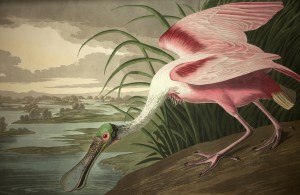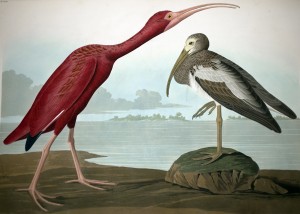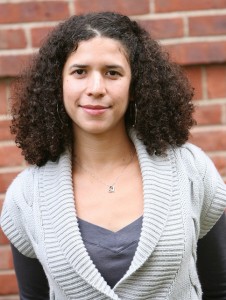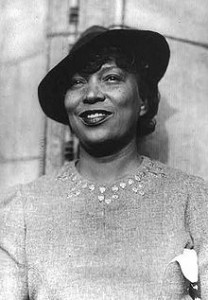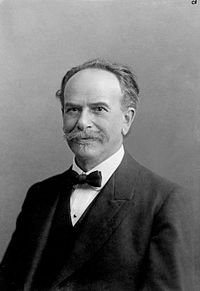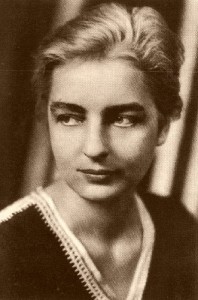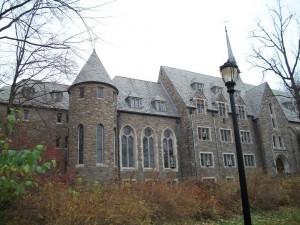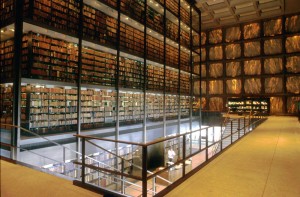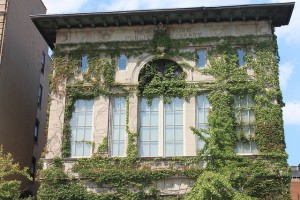Posted on behalf of Ron Patkus, Director of Archives and Special Collections
One of the most talked-about exhibitions in New York this spring has been the New York Historical Society’s Audubon’s Aviary: Part I of The Complete Flock. The show is the first of a three-part series which presents the preparatory watercolors John James Audubon produced for his masterpiece The Birds of America (1827-1838). Altogether there are 433 of these watercolors, which represent a high point in American natural history and art.
Audubon collaborated first with the Scottish engraver William Lizars and then with the English engraver Robert Havell to create and sell by subscription the large hand-colored prints for The Birds of America. Subscribers received five prints at a time over a period of years. We do not know exactly how many sets were created, but today a little more than 100 survive in their entirety, mostly on the campuses of colleges and universities in the United States, including Vassar. They are referred to as “double-elephant folios,” because of their great size.
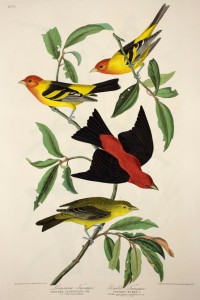 The original owner of Vassar’s set was probably John William Clough of York, England (1773-1843). We know that either he or his son (who was also named “John”), was an early subscriber to Audubon’s work. On the back of some of the plates in the Vassar set appears the name “J. Clough,” which may have been written by the bookbinder as a note to himself about the owner. It has been surmised that the Clough family sold its copy during the financial crisis of 1879; a note in pencil in the first volume indicates that with another of Audubon’s works, the set sold for $1,800. In any case, Vassar received the set in 1897 as a gift from New Yorker Charles Senff, a well-known figure in the American sugar trade. Senff was a major contributor to the fund which established the Audubon memorial in Trinity Cemetery, Washington Heights.
The original owner of Vassar’s set was probably John William Clough of York, England (1773-1843). We know that either he or his son (who was also named “John”), was an early subscriber to Audubon’s work. On the back of some of the plates in the Vassar set appears the name “J. Clough,” which may have been written by the bookbinder as a note to himself about the owner. It has been surmised that the Clough family sold its copy during the financial crisis of 1879; a note in pencil in the first volume indicates that with another of Audubon’s works, the set sold for $1,800. In any case, Vassar received the set in 1897 as a gift from New Yorker Charles Senff, a well-known figure in the American sugar trade. Senff was a major contributor to the fund which established the Audubon memorial in Trinity Cemetery, Washington Heights.
Additional evidence of the early state of Vassar’s set is provided by the first plate, which features the heading “Great American Cock” (later printings used only “Wild Turkey”). Further, the paper of the first plates features an early watermark of the Whatman mill. The plates are bound into four volumes; the first three each have 100 plates, and the fourth one has 135. The binding is half morocco, with gilt decoration, and marbled endpapers.
The greatest scholar of the Audubon prints has been Waldemar H. Fries, who wrote an important reference work titled The Double-Elephant Folio: the Story of Audubon’s Birds of America. Interestingly, Fries’ wife, Elizabeth, was a member of Vassar’s Class of 1921; she funded the purchase of the first display cases for Vassar’s Audubon folios. The cases were presented in the fall of 1974, and on the occasion of the dedication, Mr. Fries gave a talk about the folios in the library.
Conservation work on Vassar’s set was performed in New York City in 1977 by Carolyn Horton and Associates. A full listing of the repairs is tipped into the back of volume one. The conservation work included treating the leather, putting down scuffs, cleaning all of the plates, and mending those that needed it.
In addition to The Birds of America, the Archives & Special Collections Library is fortunate to possess several other works relating to Audubon. For instance, we have his 5-volume Ornithological Biography, also donated by Charles Senff, which was a text accompaniment to the original prints. Moreover, we have a first edition of the octavo version of Birds of America, published in 1839. The library also owns a first edition of another important, though more-neglected, work of Audubon, called The Quadrupeds of North America. Other books for further reading are available in Archives & Special Collections, the Main Library, and the Art Library.

